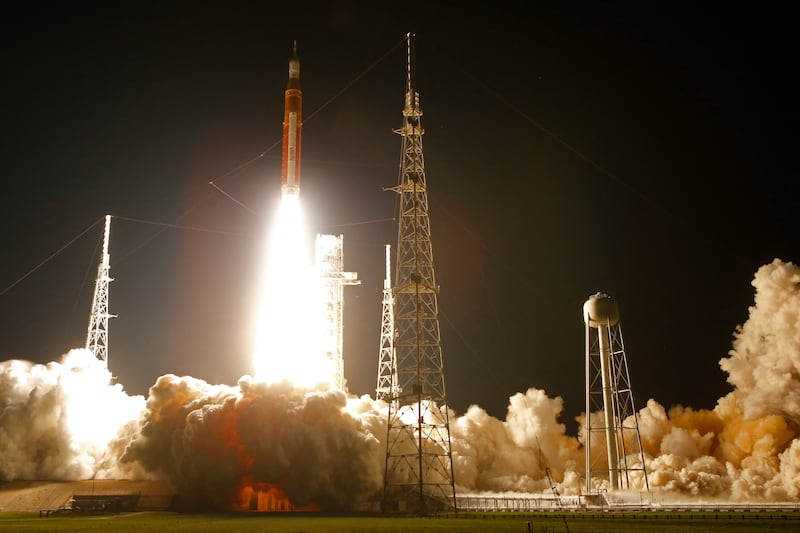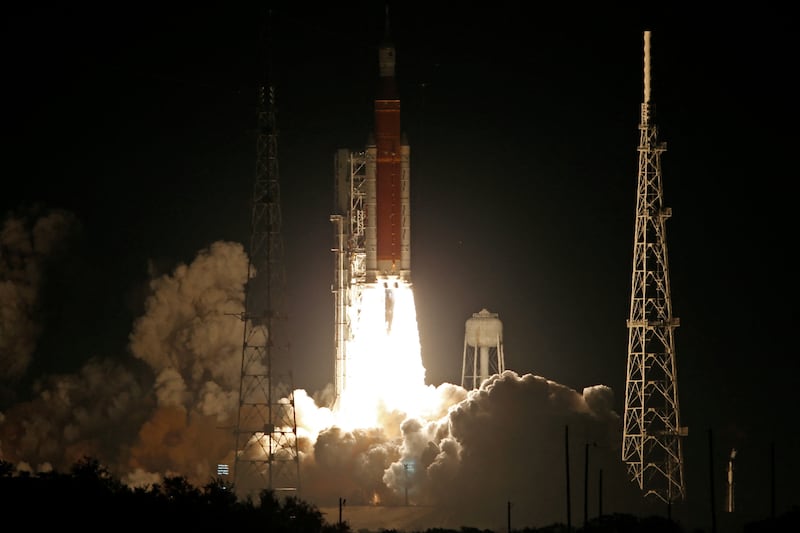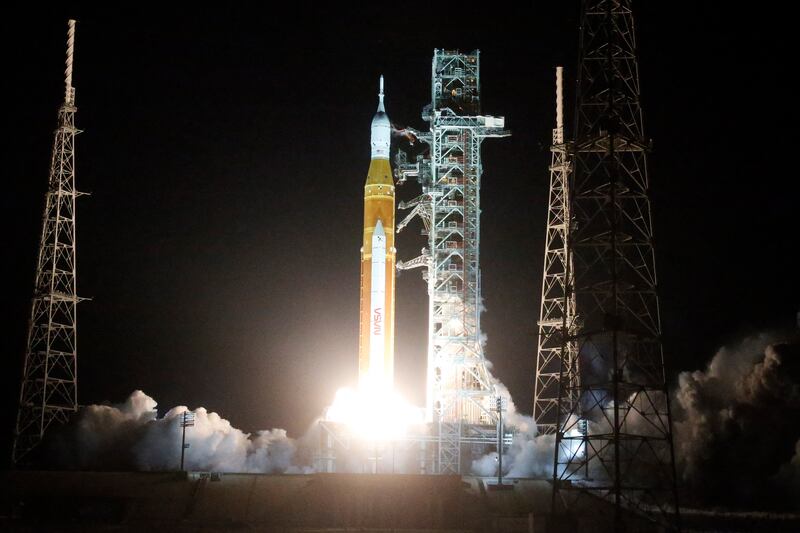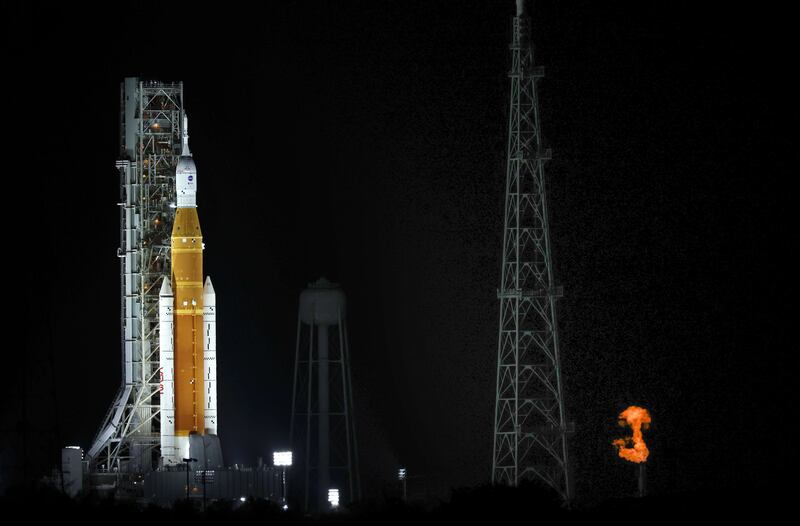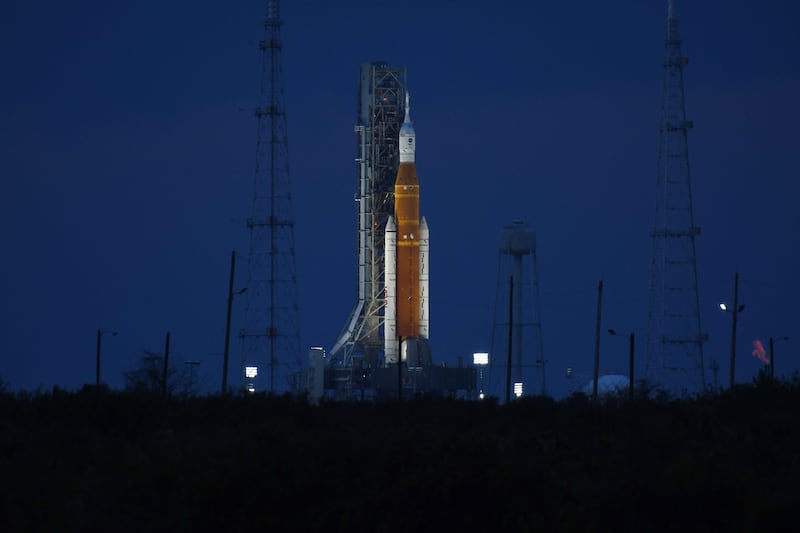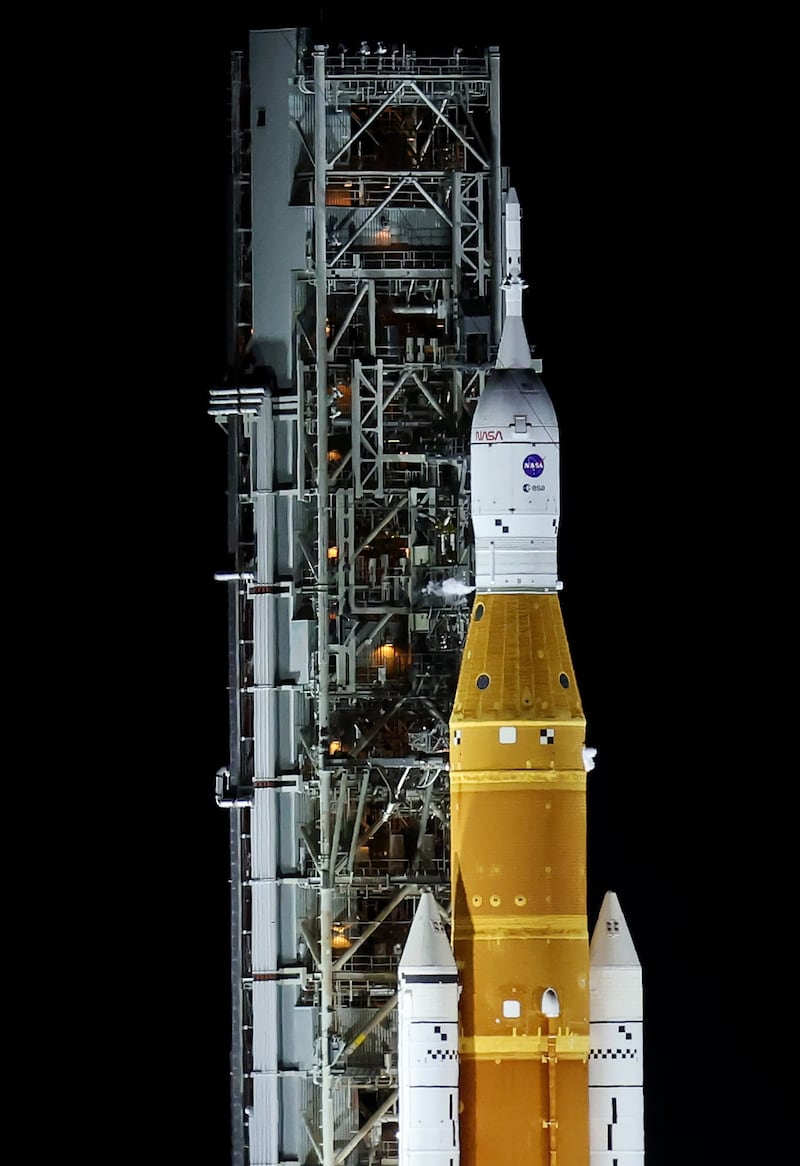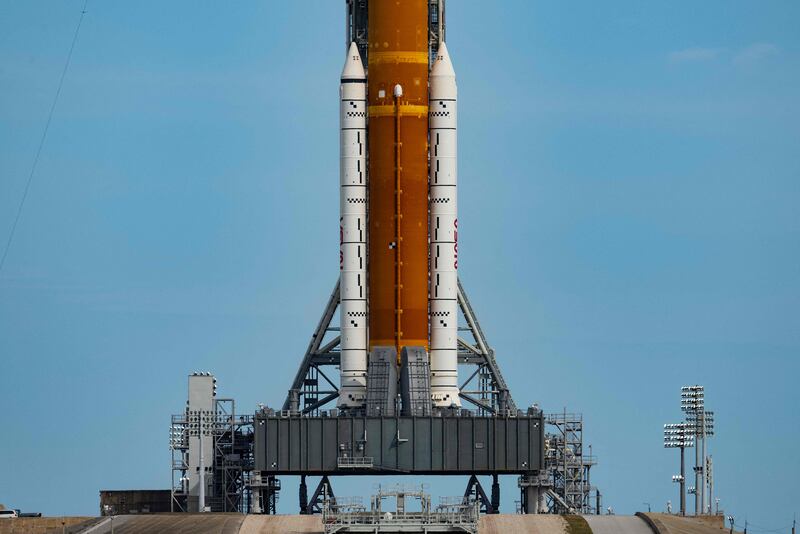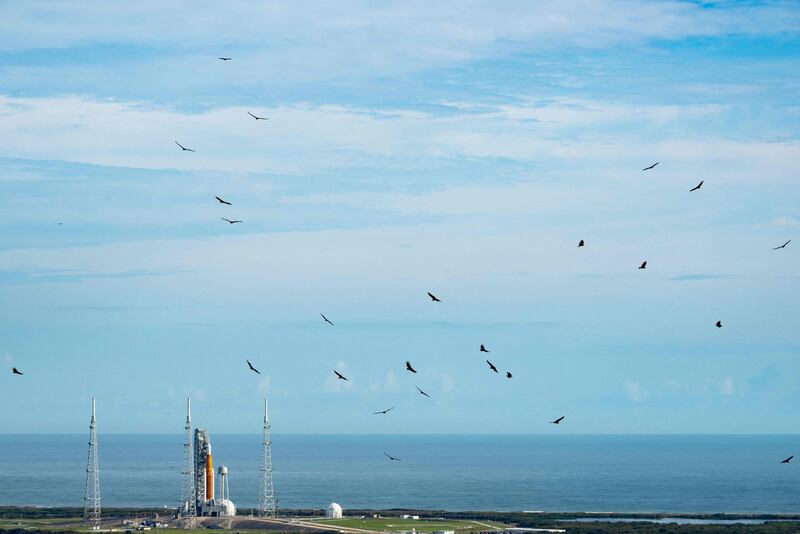Nasa has launched its Artemis 1 rocket into space for an uncrewed mission around the Moon.
After several delays caused by technical issues and hurricanes, the Space Launch System, with the Orion spacecraft on top of it, lifted off from the Kennedy Space Centre in Florida.
The $4.1 billion Artemis 1 mission will pave the way for the US space agency to send astronauts to the lunar surface, more than 50 years after the Apollo era ended.
It is the first of many planned missions under the Artemis programme, which will send crewed missions to the Moon before the end of the decade.
The rocket lifted off at 10.53pm GST, generating 3,991 tonnes of thrust and reaching a speed of 40,233kph in about eight minutes to reach space.
In a Nasa live broadcast, the sky turned a bright red as the engines ignited and the rocket blasted off the ground.
The Orion spacecraft will travel to the Moon, where it will spend a few weeks in flight, as mission control measures its performance.
This was the third attempt by Nasa to launch the rocket. Two previous attempts failed owing to hydrogen leaks.
Hurricane Ian also delayed an attempt in late September and the rocket also survived Hurricane Nicole while on the launch pad.
Numerous hurdles
The launch attempt on Wednesday has not been short of obstacles.
Overnight, Nasa began fuelling the rocket. It was able to load 741,940 litres of liquid oxygen into the core stage before engineers detected a hydrogen leak.
A “red team” was sent out to the launch pad to tighten bolts on the valve, which was expected to take only 15 minutes, but it took about an hour.
“Unfortunately, the team here was unable to remedy the leak remotely,” the Nasa TV launch commentator said.
“And so it became necessary to send a crew of individuals called the Red Crew out to the launch pad to make a hands-on fix.”
At about 8am, the red crew completed their work and the liquid hydrogen again started flowing into the tank until it was completely full.
The US Space Force's Eastern Range also had to repair an ethernet switch to restore radar tracking data. That took 70 minutes to fix.
Why is Nasa going to the Moon?
It has been more than 50 years since humankind last set foot on the Moon in the final mission of the Apollo era.
But Nasa wants to return humans to the lunar surface under the Artemis programme and build a small station, called Lunar Gateway, in the Moon's orbit.
The space agency astronauts would be able to live and work on the Moon to carry out research, and eventually send humans to Mars from there.
Artemis 1 will measure the rocket and Orion spacecraft's performance.
The flight will also carry 10 CubeSats — miniature satellites — that will support the mission's investigations.
Artemis 2 will involve sending the first crewed mission to orbit the Moon in 2024.
A crew of four will perform a lunar fly-by for about 21 days before returning to Earth.
Artemis 3 will be the first crewed lunar landing mission, and is likely to include a woman. This mission has been delayed until 2025.
